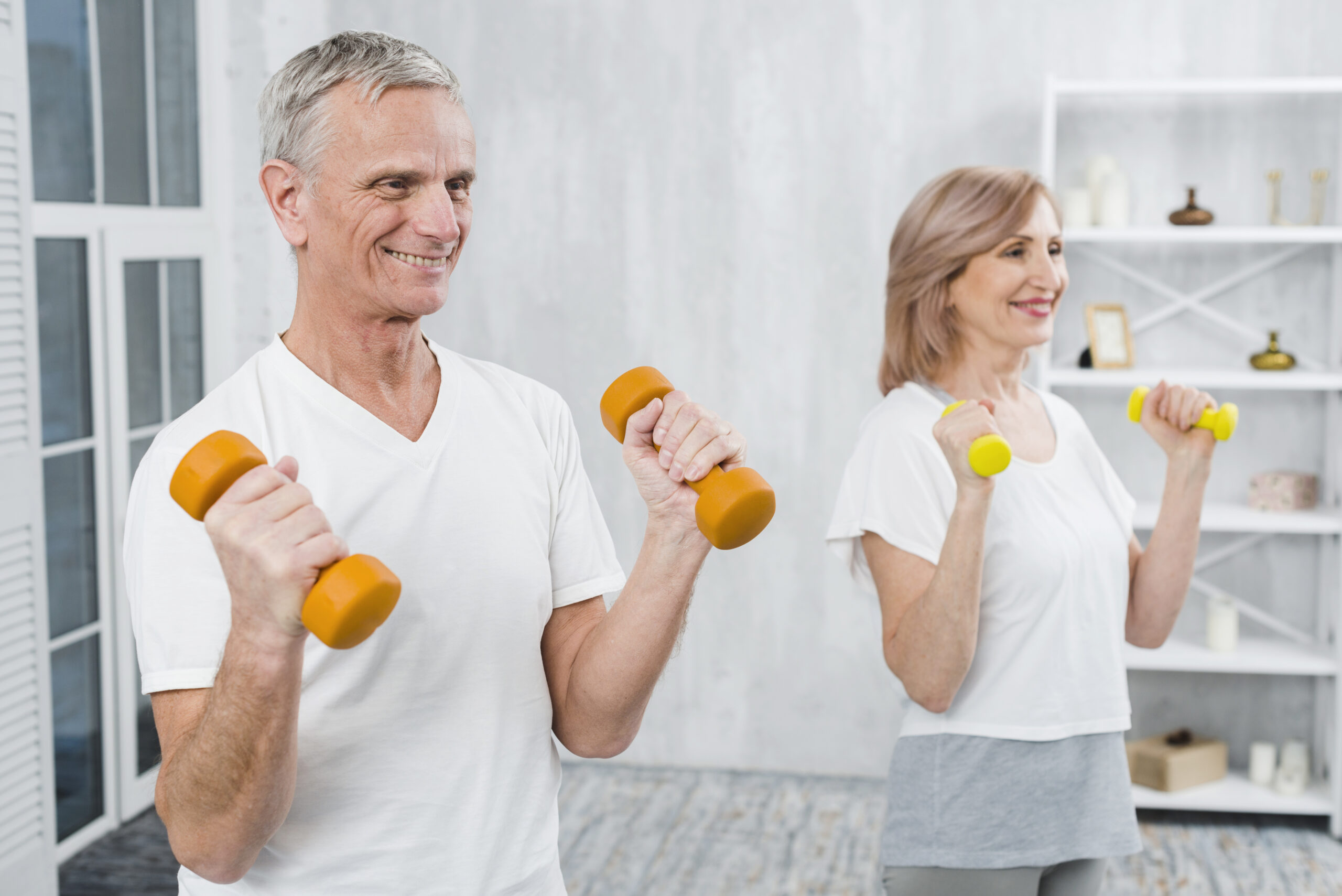
As we age, keeping up with our wellbeing turns out to be progressively significant. The relationship between fitness and aging is pivotal in ensuring not only longevity but also a high quality of life. Regular physical activity can mitigate many age-related health issues, enhance mobility, and improve overall well-being. This article explores how fitness can combat the effects of aging and presents practical strategies to incorporate exercise into daily life. Fitness and Aging: The Key to a Vibrant Life:
The Importance of Fitness in Aging
1. Combatting Age-Related Decline
As we age, our bodies naturally experience a decline in muscle mass, bone density, and joint flexibility. This decline can lead to a higher risk of injuries, falls, and chronic diseases. Taking part in normal activity can assist with balancing these impacts. Studies show that strength training, in particular, can preserve muscle mass and improve bone health. According to the National Institutes of Health, older adults who engage in regular physical activity can reduce their risk of chronic diseases such as heart disease, diabetes, and even some cancers.
2. Enhancing Mental Health
Physical fitness is not just about the body; it significantly affects mental health as well. Exercise has been shown to release endorphins, which can alleviate feelings of depression and anxiety. Additionally, regular physical activity can improve cognitive function and reduce the risk of cognitive decline. A study published in the Journal of Aging Research found that older adults who engaged in regular aerobic exercise demonstrated improved memory and executive function compared to their sedentary peers.
3. Boosting Mobility and Independence
Maintaining mobility is crucial for preserving independence as we age. Regular fitness activities can enhance balance, coordination, and flexibility, reducing the risk of falls. Incorporating exercises that focus on core strength and stability can significantly improve overall balance. Furthermore, staying active can lead to greater energy levels, allowing older adults to participate more fully in daily activities and social engagements. Fitness and Aging: The Key to a Vibrant Life:
Effective Fitness Strategies for Older Adults
1. Strength Training
Integrating strength preparing into your wellness routine is fundamental. Go for the gold two meetings each week, focusing on significant muscle gatherings. This can include exercises like:
- Bodyweight exercises: Squats, push-ups, and lunges.
- Resistance bands: Effective for improving strength without heavy weights.
- Light weights: Dumbbells can be used for various exercises to enhance muscle strength.
2. Aerobic Exercise
Cardiovascular fitness is vital for heart health. Take part in vigorous activities no less than 150 minutes of the week. Options include:
- Walking: One of the simplest and most accessible forms of exercise.
- Swimming: A low-impact option that’s easy on the joints.
- Cycling: Whether stationary or on the road, cycling is great for cardiovascular health.
3. Flexibility and Balance Exercises
Incorporating flexibility and balance training can help prevent falls and improve overall mobility. Consider activities such as:
- Yoga: Enhances flexibility, balance, and mindfulness.
- Tai Chi: Focuses on slow, controlled movements and has been shown to improve balance in older adults.
4. Functional Fitness
Utilitarian wellness centers around practices that mirror day to day exercises. These can include:
- Chair stands: Help with getting up and down safely.
- Gait training: Improves walking patterns and coordination.
Setting Realistic Fitness Goals
When embarking on a fitness journey, especially as an older adult, setting realistic goals is essential. Begin with little, achievable targets and continuously increment the force and term of your exercises. This approach not only fosters a sense of achievement but also minimizes the risk of injury.
1. Listen to Your Body
Focus on how your body answers various activities. It’s normal to feel some discomfort, but sharp pain is a sign to stop. Consult with a healthcare provider before starting any new fitness program, especially if you have pre-existing conditions.
2. Stay Consistent
Consistency is critical to receiving the rewards of wellness. Establish a routine that fits into your lifestyle. This could mean exercising at the same time each day or scheduling specific days for workouts.
3. Find Enjoyment
Engaging in activities you enjoy can make fitness more appealing. Whether it’s dancing, gardening, or hiking, find what brings you joy and incorporate it into your routine.
The Role of Nutrition in Aging
While fitness is critical, nutrition also plays a vital role in the aging process. A balanced diet rich in vitamins, minerals, and antioxidants can support overall health and complement your fitness efforts. Consider:
- Protein intake: Essential for muscle repair and growth. Incorporate lean meats, fish, vegetables, and dairy.
- Hydration: Staying hydrated is crucial, particularly as thirst sensation can diminish with age.
- Whole foods: Focus on fruits, vegetables, whole grains, and healthy fats to support your energy levels and overall health.
Conclusion
Fitness is an indispensable component of healthy aging. By integrating regular exercise into your daily routine, you can enhance your physical and mental well-being, improve mobility, and maintain independence. Remember, it’s never too late to start. Embrace the journey towards a healthier, more active lifestyle, and reap the benefits for years to come. Stay active, stay engaged, and most importantly, enjoy the process!

